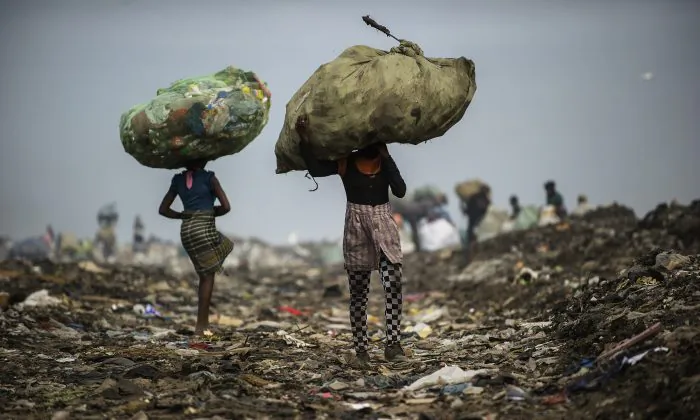Concern for the health of the poor is one of the critical issues in development. Poverty and health are closely linked. Poverty cannot be defined solely in terms of low or no income. No access to health services, lack of access to safe water and adequate nutrition, and illiteracy or low educational level are also essential components of poverty. Poverty is one of the most influential factors in ill health, and ill health—in a vicious cycle—can lead to poverty.
Illness impairs learning ability and quality of life, has a negative impact on productivity, and drains family savings. In addition, poor people are more exposed to environmental risks (poor sanitation, unhealthy food, violence, and natural disasters) and less prepared to cope with them. At a global level, more than 750 million people lack access to potable water.
[coverage]1932092, 1465383[/coverage]
People with low income are at greater risk of illness and disability. They are also less informed about the benefits of healthy lifestyles, and have less access to quality health care. It is estimated that one third of deaths worldwide—some 18 million people a year or 50,000 a day—are due to poverty-related causes. UNICEF statistics show that 22,000 children die each day because of poverty.
More than 1.5 billion people in the world—most of them children—live in extreme poverty, and 80 percent of them live in developing countries. Poor people have little to no access to qualified health services and education, and do not participate in decisions critical to their day-to-day lives.

Those who live in extreme poverty are five times more likely to die before age five, and two and a half times more likely to die between 15 and 59 than those in higher income groups. The same dramatic differences can be found with respect to maternal mortality levels and incidence of preventable diseases.
[coverage]1939505, 2080890[/coverage]
The impact of poverty on health is largely mediated by nutrition and is expressed throughout the life span. However, nutrition and health are only moderately responsive to mere economic growth.
Increased income alone cannot guarantee better nutrition and health because of the impact of other factors—notably education, environmental hygiene, and access to health care services—which cannot necessarily be obtained with increased income in developing countries.
Those living in poverty and suffering from malnutrition have an increased propensity to suffer from a host of diseases, a lower learning capacity, and increased exposure and vulnerability to environmental risks. Poor children frequently lack stimuli critical to growth and development. It is estimated that 165 million children worldwide suffer from malnutrition.

Experiences in several countries have shown the power of education to increase the nutritional levels and the health status of the poor. In that regard, girls’ education is one of the most effective investments countries can make toward development and better health. Those countries that have the greatest disparities in access to education, like Afghanistan, India, Ethiopia, and Yemen, are also among the poorest countries in the world.
[coverage]1981224, 1933635[/coverage]
In urban India, for example, it has been found that the mortality rate among children of educated women is almost half that among children of uneducated women. In the Philippines, primary education among mothers has reduced the risks of child mortality by half, and secondary education has reduced that risk by a factor of three.
Several strategies can be used to improve the access of mothers and children to educational opportunities as a way of improving their health status. At the national level, governments—particularly in developing countries—have to establish education as a priority and provide necessary resources and support.

At the international level, lending institutions have to increase the number of debt-reduction plans for those countries willing to provide resources for basic education. Since an important goal is to reduce economic inequity to improve the health status of populations, education can provide substantial benefits in people’s health status even before reducing the economic gap between the rich and the poor.
César Chelala, M.D., Ph.D., is a global public health consultant for several U.N. and other international agencies. He has carried out health-related missions in 50 countries worldwide. He lives in New York and writes extensively on human rights and foreign policy issues, and is the recipient of awards from Overseas Press Club of America, ADEPA, and Chaski, and recently received the Cedar of Lebanon Gold Medal. He is also the author of several U.N. official publications on health issues.
Views expressed in this article are the opinions of the author and do not necessarily reflect the views of The Epoch Times.









